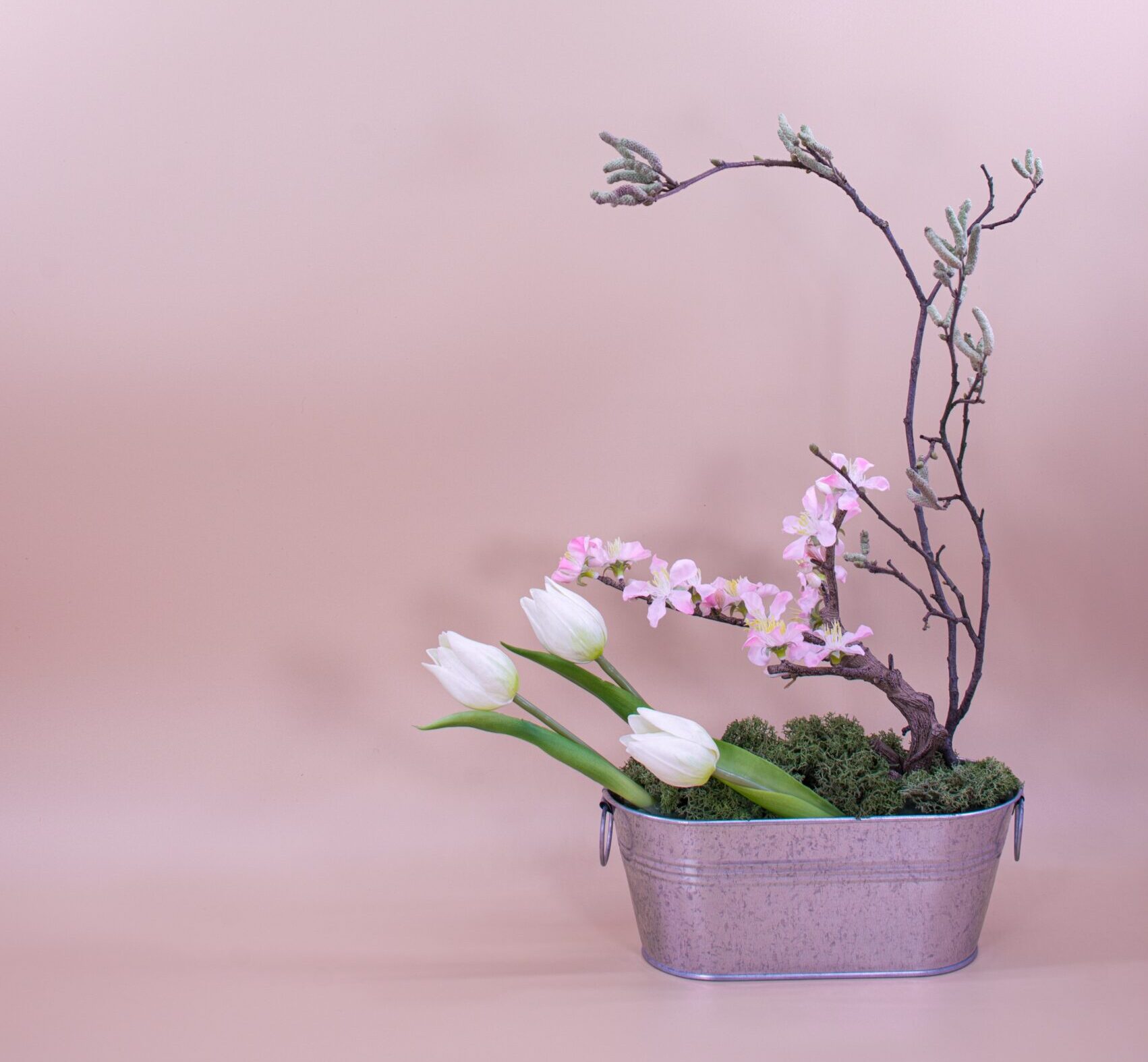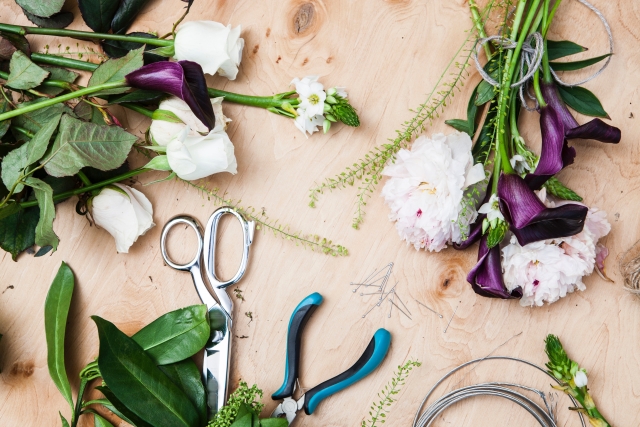Ikebana is not just about creating a beautiful floral display, but also about expressing the essence of nature and the seasons through the arrangement.

Ikebana is the Japanese art of flower arrangement. It is also known as kado, which means “the way of flowers”.
The history of ikebana dates back to the 7th century when the practice of offering flowers to Buddha began in Japan. Over time, the art form evolved and different schools of ikebana emerged, each with its own unique style and philosophy.
In ikebana, the arrangement is based on three main elements: the line, the mass, and the space. The line represents the stem and branches of the flowers and plants and is used to create the structure of the arrangement. The mass represents the flowers or foliage, and is used to create the focal point or main feature of the arrangement. The space represents the empty space between the flowers and plants, and is used to create a sense of balance and harmony.
There are many different styles of ikebana, but some of the most well-known include the traditional styles of Rikka and Shoka, as well as the more modern styles of Nageire and Moribana.

Rikka and Shoka
Rikka, which means “standing flowers,” is the oldest and most complex style of ikebana, dating back to the 15th century. Rikka arrangements typically feature a tall, upright central stem, which represents a mountain or waterfall, and a complex arrangement of branches, flowers, and leaves arranged around it. The arrangement is designed to represent a natural landscape, such as a mountain or forest, and incorporates elements that symbolize different seasons and natural elements. Rikka ikebana is considered a highly formal and ceremonial art form, and is often used in religious ceremonies and other special occasions.
Shoka, which means “to give life to flowers,” is a simpler and more modern style of ikebana that emerged in the 20th century. Shoka arrangements are more compact and asymmetrical than Rikka arrangements and typically feature only a few stems arranged in a triangular or diagonal shape. Shoka ikebana emphasizes the natural beauty of the flowers and plants themselves, rather than attempting to create a specific landscape or scene. The style is often used in everyday settings, such as in homes and offices, and is considered a more casual and accessible form of ikebana.
While Rikka and Shoka are very different in terms of their complexity and style, both emphasize the importance of balance, harmony, and respect for the natural world. Through the art of ikebana, practitioners can gain a deeper appreciation for the beauty of nature and the many ways in which it can be expressed and celebrated.

Nageire and Moribana
Nageire and Moribana are two modern styles of ikebana that emerged in the 20th century.
Nageire, which means “thrown in,” is a style of ikebana that emphasizes simplicity and spontaneity. Nageire arrangements are created by placing flowers and branches into a vase or container in a natural, unstructured way. The stems of the flowers are often allowed to cross over one another, creating a sense of movement and vitality. Nageire arrangements are typically taller and more vertical than other styles of ikebana, and often feature a single stem or flower as the focal point of the arrangement. This style is considered more informal and is often used in everyday settings.
Moribana, which means “piled up flowers,” is a style of ikebana that features a shallow container and a more structured arrangement. Flowers and plants are arranged in layers or “piles” in the container, with the tallest stems in the back and the shorter stems in front. Moribana arrangements often incorporate more than one type of flower or plant, and may include elements such as rocks or other natural materials to create a sense of balance and harmony. This style is often used in formal settings and is considered more complex than Nageire.
Both Nageire and Moribana ikebana emphasize the natural beauty of the flowers and plants, and both are designed to reflect the changing seasons and the beauty of the natural world. These modern styles of ikebana have helped to bring the art form to a wider audience and have encouraged a new generation of practitioners to explore the many possibilities of this ancient art form.

The benefits of Ikebana
In addition to creating beautiful floral arrangements, ikebana is also seen as a form of meditation and mindfulness. By focusing on the natural materials and the act of arranging them, practitioners of ikebana can achieve a sense of calm and inner peace. Ikebana also encourages creativity and self-expression. Practitioners have the opportunity to experiment with different materials and arrangements and to express their own unique vision and style.
Ikebana is based on the principles of harmony and respect for the natural world. Practicing ikebana can deepen one’s appreciation for the beauty of flowers and plants, and can provide an opportunity to learn more about Japanese culture and aesthetics!
Overall, ikebana is a beautiful and meaningful art form that has been passed down through generations in Japan. It is a reflection of the country’s deep appreciation of nature and its many wonders.



